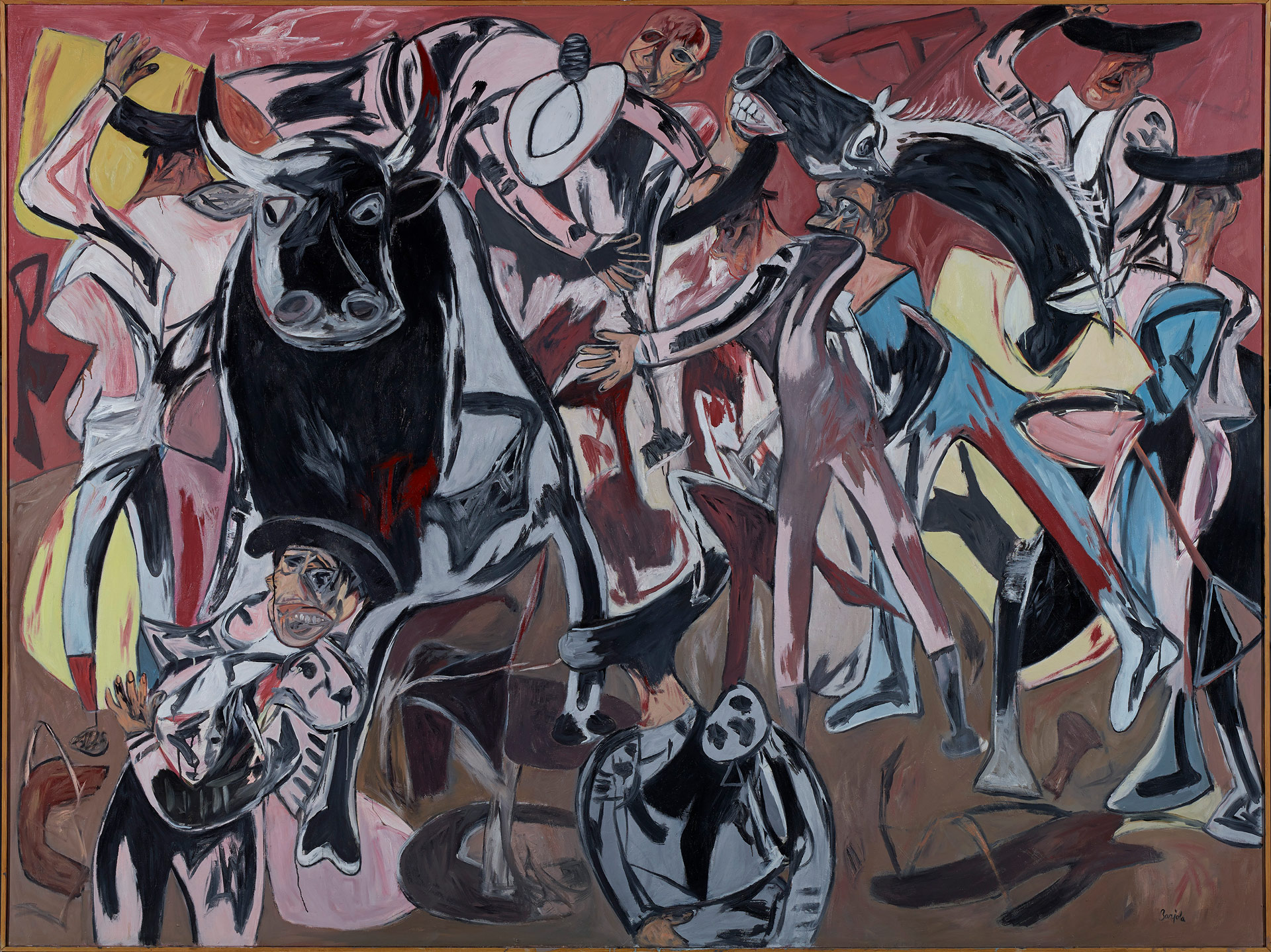
Juan Barjola (Torre de Miguel Sesmero, Badajoz, 1919 – Madrid, 2004)
Tauromachy
1986
WORK INFORMATION
Oil on canvas, 200 x 270 cm
OTHER INFORMATION
Signed in the lower right-hand corner: "Barjola".
Though somewhat older than most of the leaders of the great generation of abstract Spanish postwar painters, Juan Barjola would become the most distinguished representative of the new figuration that emerged in reaction to the crisis of Art Informel. He did so by formulating a proposal articulated around the central axis of an essentially Expressionist impulse, frequently associated with the darkest, most visceral side of Spanish naturalism but which also developed a surrealising streak and occasional flashes reminiscent of Pop Art.
The canvas Composición [Composition] was painted barely two years after Barjola's first trip abroad, bound not for Paris but for the dark Brussels of Regoyos and Verhaeren, then being infused with new blood by the artists of Cobra. Made shortly after breaking with the routines of his early figuration, this work pertains to a time of searching, in which a kind of proto-image still struggles to emerge from the raging sea of dark colour.
The work Pintura [Painting], on the other hand, contains something of the oneiric impetus of a different Barjola, who allowed echoes of the surreal to resonate and flourish in his oeuvre. Even so, the determining element in this work is the use of an iconic motif—the mirror—which the artist would employ repeatedly during those years. The circular mirror, drastically foreshortened, introduces an ambivalent game of distortion into the space depicted in this composition, while situating the spectral image of a totemic representative of his iconography, the dog, in the very centre of the scene.
Painted the following year, in Niña [Girl] we find the dog again, now a more visible presence lying behind the glass door at the back of the scene, but the protagonist is the blonde girl which the artist would include in several other canvases from the early 1970s. Although this character has a Pop flavour, the slightly grotesque distortion of the face unmistakeably invokes the buffoonish spectre of Velázquez's portrait of a young dwarf, El Niño de Vallecas.
Finally, two compositions of colossal size give us an idea of the masterly splendour of Barjola's final years, when his iconographic incursions in the world of bullfighting became a recurring pattern. Much—too much, in our opinion—has been made of the fact that the vigorous, extremely uninhibited vocabulary of Barjola's later work seems to point towards the legacy of Picasso. The bullfight theme and even the preference for that palette of whites, blacks and greys—a predilection shared by the master from Málaga—used by Barjola in canvases like the one from 1993 reinforce this idea, which is by no means inaccurate. Even so, the most essential aspect of this spectacular final phase in the career of the painter from Extremadura is the powerful gesturality that drives his dizzying compositional spirit. [Fernando Huici March]

